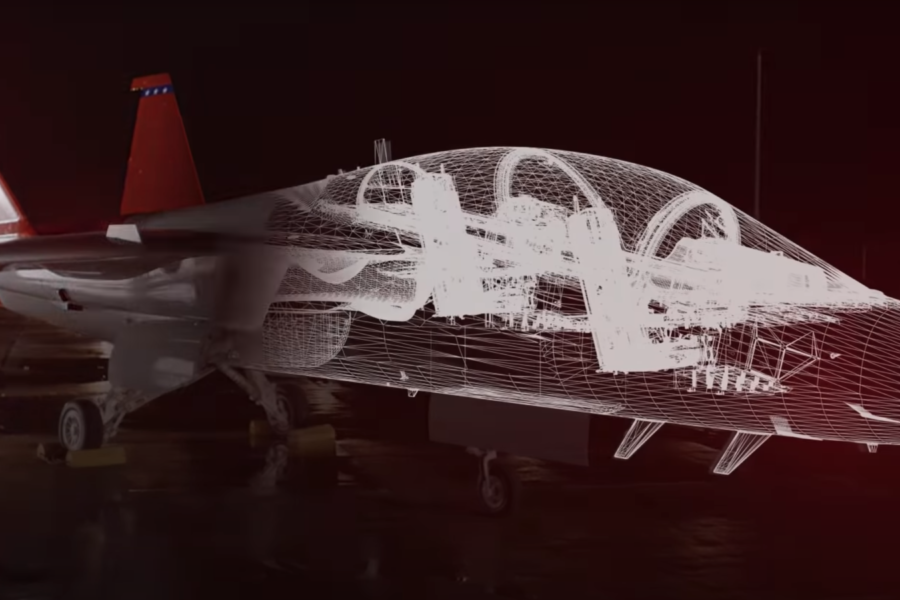Digital engineering can save about 20 percent in time and money over the approaches of just a few years ago, but its benefits have been exaggerated and it is not a revolutionary method that will radically cut development time and cost, Air Force Secretary Frank Kendall said May 22.
“It was over-hyped,” Kendall told reporters at a Defense Writers Group meeting.
Instead, Kendall said while digital engineering works best with technologies that are already well understood, it requires at least as much real-world testing when it is applied to all-new things.
Kendall’s remarks offer a note of caution after defense and Air Force officials alike have hailed the practice of designing new systems entirely in the digital realm as a revolutionary change in how the Pentagon will do business.
While the benefits of digital engineering are inarguable, Kendall said—such as allowing industry and government design specialists to see “exactly the state of a design or a program” at the same time—there are limits.
“I’ve tried to get reasonable data on how much” digital engineering saves in cost and schedule, he said. “My best feel for that is, it’s on the order of 20 percent, as a ballpark number.”
While that figure is significant, it’s not on the order of ten times or more, Kendall noted.
“With the capacity of modern computing capabilities, data storage, and communications to handle large amounts of data, we’ve been able to integrate our models,” Kendall said. “So, models that worked independently and had to be correlated—somewhat manually—can now talk to each other. And so you get a fully-integrated digital design, whereas before you would have had to do different parts of the design separately.”
This approach is paying dividends with the Next Generation Air Dominance fighter, he said.
“The program office for NGAD is living in the same design space, if you will, as the NGAD bidders,” he said. “They have direct access into the database that’s being used for the design.” Visiting the program office at Wright-Patterson Air Force Base, Ohio, Kendall said he saw “a government engineer, who was very capable, working directly with one of the two contractors—he was on one of the teams—and interfacing with them on the design.”
Such an arrangement decreases back-and-forth and reduces misunderstanding, Kendall said. But the Air Force has to be careful not to let those efficiencies go to waste.
“One of the things that’s been true in engineering forever is that if you give an engineer more time, he’ll just do more design iterations because no engineer is ever completely happy with what he’s designed,” Kendall noted.
“So there’s a risk that we’ll just take advantage of the efficiency … to do more, right? What we need to do is get to where we’re comfortable with it, and then go forward with the next stage of development.”
Industry, he said, is motivated to get designs into production, so digital engineering “hopefully … will help us get into production more efficiently, more effectively.”
But he scoffed at the notion that digital engineering can drastically reduce the amount of testing required of new systems.
“Back in the F-35 [design] days I remember industry coming in and saying, ‘we’re so good at engineering now, we don’t need to do testing anymore,’” Kendall said. “That’s not true. And it’s particularly not true when you push the envelope outside of things you’ve done before, where … you don’t have as much confidence in your models.”
When designing a system that represents “a small incremental improvement,” the Air Force and its contractors can be confident that its digital model is accurate, Kendall said.
“But when you’re doing something that’s going to be radically different than prior programs, you’ve got to get into testing to validate … your design efforts,” he noted.
A prime example of that is the T-7 Advanced Trainer, being developed by Boeing. After being digitally designed and flying just three years after its conception, the aircraft is now two years behind schedule in reaching Initial Operational Capability, due largely to the ejection/escape system not performing as expected, particularly with pilot manikins at the low end of the range of physiques the jet must accommodate. Boeing has also faulted supply chain and workforce issues as contributing to the delay.
“You see this all the time,” Kendall said. “Hypersonics are a good example: If you haven’t done it before, you’re going to have to go and actually do it.”
Perhaps the biggest test of digital engineering thus far might be Northrop Grumman’s B-21 bomber, a project generally regarded as having had few major hiccups in development. Kendal said he is being “cautious” in his remarks about the program, though, for a simple reason: “We haven’t flown yet.”
Famously quoted as saying the F-35 was an example of “acquisition malpractice,” Kendall said the main issue with that program “was the too-early start of production, and we had a lot of design changes we had to make after we started production.” He doesn’t want to repeat that with the B-21.
“There’s a balance, there,” he said. “There’ll be some concurrency between both B-21 and NGAD, between development and production, but you want to do that in a rational way that doesn’t take excessive risk.”
